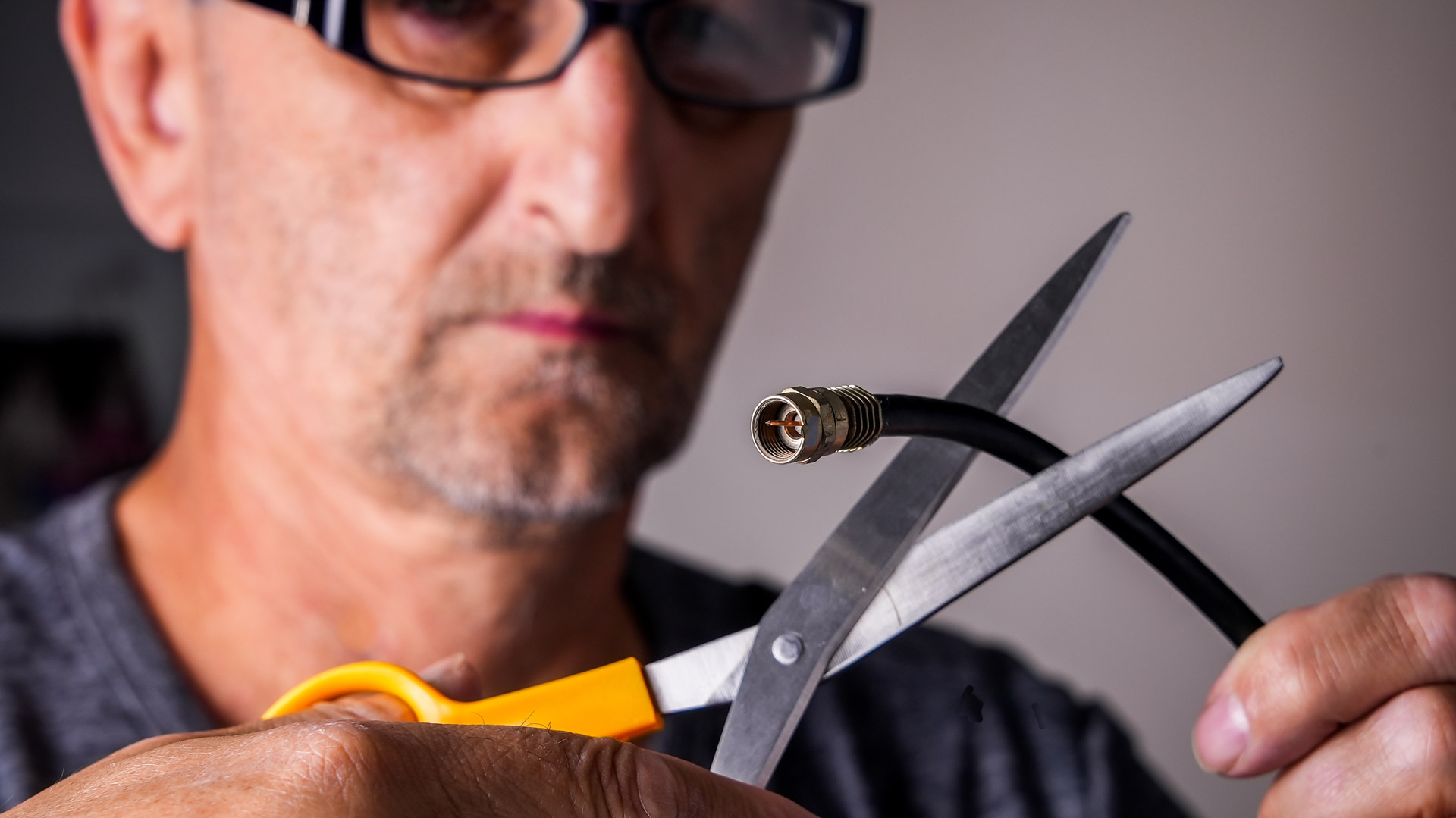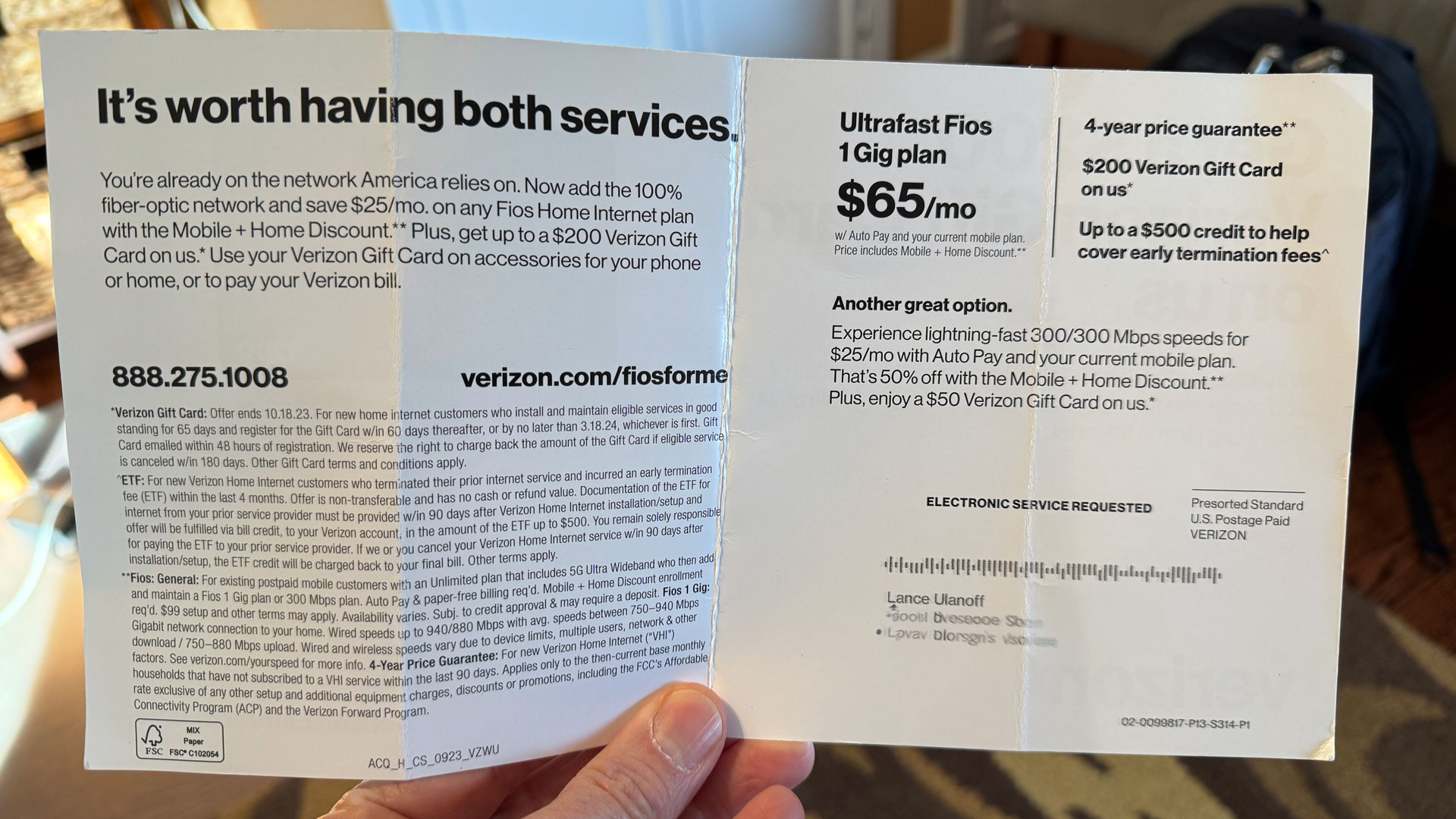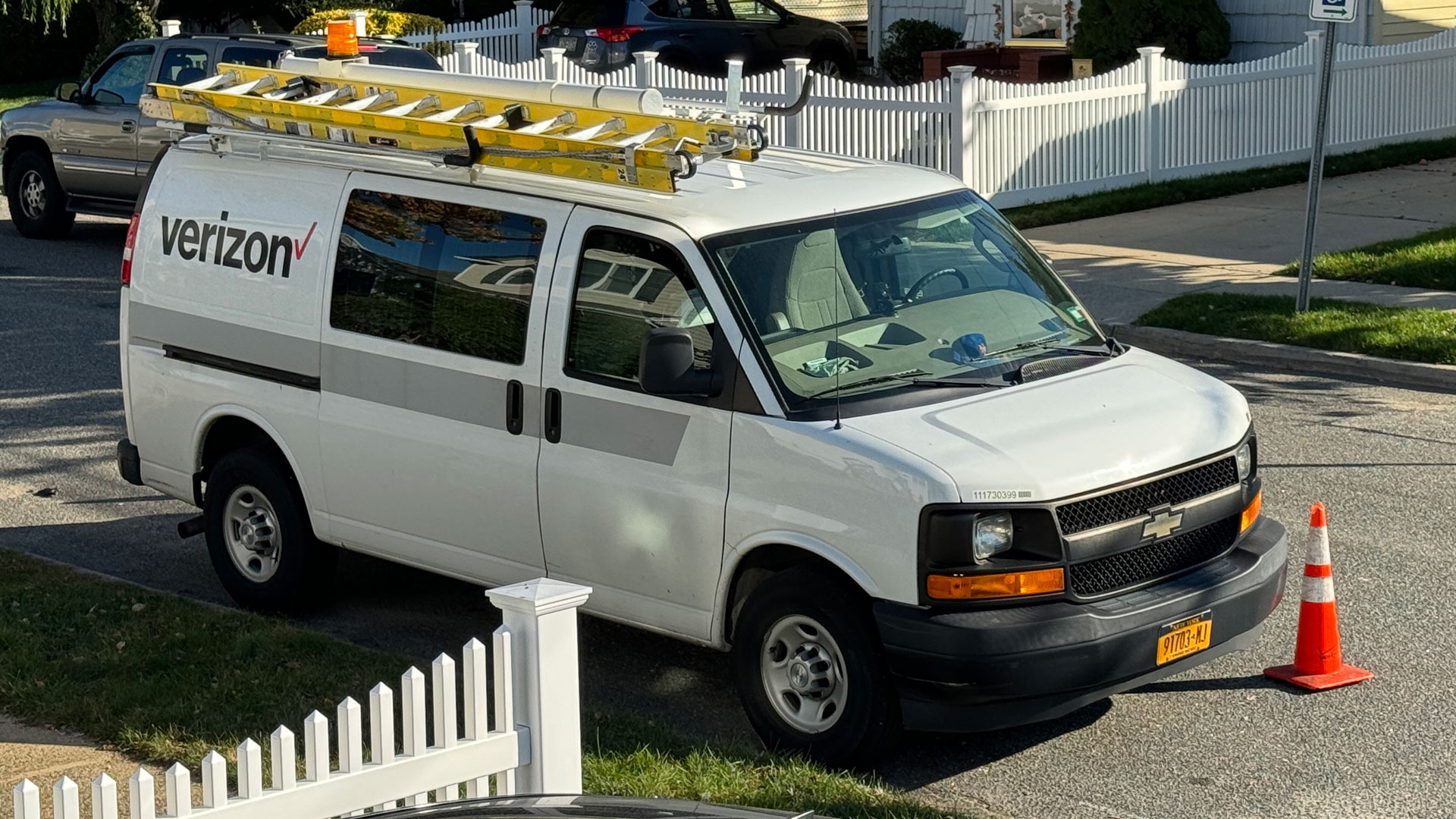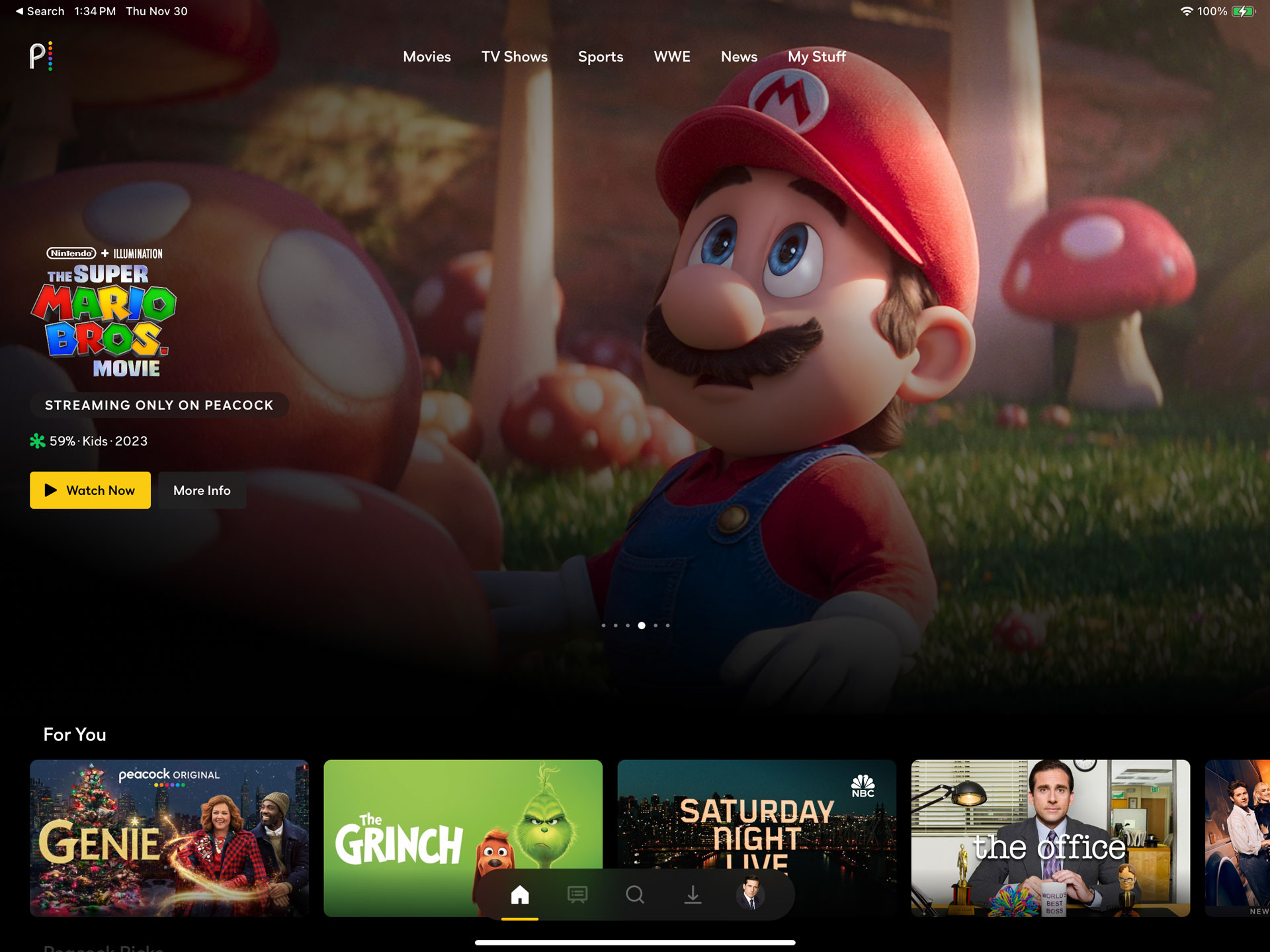If you think you know everything about cutting the cord, you are wrong
The surprising lesson I learned from cutting the cord that could save you a big headache

If you haven't already, someday – maybe soon – you will cut the cord, and when you do you will discover things about your relationship with television, the internet, and your own personal finances you probably never knew. It's not always an easy process or pleasant journey, but I can tell you that in the long run it's worth it, and you'll probably never look back. Okay, you might glance back on occasion, but it's unlikely that you'll ever go running back into cable's arms.
Before I share my take, I think it's worth clarifying what I mean by 'cable cutting'. In most cases, there's no longer a cable to cut. Modern cable TV providers use fiber Optic cable now, and some do not even run coaxial cable through the home; they use Wi-Fi to connect their 'cable' boxes, and then share a cable TV signal throughout the home.
It's not always an easy process or pleasant journey, but I can tell you that in the long run, it's worth it, and you'll probably never look back.
Still, the idea of cable- or cord-cutting has such a strong hold on our psyches that most people rarely talk about how, even if they do cut that cable, they will probably have a lifelong relationship with the cable company. Yes, the company that is also providing their high-speed broadband Internet service. It's that part of the relationship that provides the most important part of the service anyway: an internet connection that can power your work, communication, information gathering, and all your best streaming services.
For me, walking away from cable had been a long time coming, and some would argue that I'm late to the trend. I waited for many reasons, but chiefly because I still enjoyed some of what cable TV had to offer and, since I occasionally appear on it, it seemed like something worth keeping.
That value proposition, though, kept shifting, and as the price of my cable/internet bill and the monthly fees for all my streaming services rose, I knew something had to give. There was also the matter of my service. Optimum's hardware and reliability were abysmal. All of our boxes kept rebooting, and we regularly lost internet and cable throughout the home.
The deal

As is often the case, I was spurred to action by a deal. Verizon offered its 1Gbps FiOS for $65 a month to all existing Verizon Mobile customers. My family is on Verizon's 5G plan with the best iPhones, so I decided to investigate.
I'd been an early FiOS customer (probably the first one in my neighborhood) in the early oughts. I loved the speed and reliability, but Verizon kept raising the price, and five years ago I went with Optimum. This time, though, would be different. I had no intention of signing up for what was once called a 'Triple Play' deal (cable, internet, and landline phone). All I needed was broadband internet.
Sign up for breaking news, reviews, opinion, top tech deals, and more.
A lengthy phone call with a Verizon FiOS rep revealed that the plan was as good as promised, and there were some perks thrown in, like a four-year price guarantee, a $200 gift card, and temporary free access to Disney+ and Hulu (with ads). By the end of the call, I was signed up for a new Verizon FiOS Internet-only plan. Installation would commence at the end of the month.
The breakup

With the FiOS installation date in place, I had to coordinate the cancellation and removal of my Optimum account and equipment in a way that did not leave us without internet service.
In the end, that was the easy part; the hard part was convincing the Optimum rep that this breakup was real.
"Sure there’s nothing we can do? You've been with us five years,” said the rep. He wasn't pleading. Instead, he sounded like a friend trying to talk his buddy out of jumping off that cliff into the rough waters below.
He offered me new Optimum deals, and reminded me that if I wasn't happy with FiOS, they'd probably refund my money and I could come right back to Optimum.
He wasn't pleading. Instead, he sounded like a friend trying to talk his buddy out of jumping off that cliff into the rough waters below.
Seeing that I wasn't moved, the rep hit me with a little nostalgia bomb. Because I was not signing up for a landline with FiOS, there was no place to put my home phone number, one I'd had since I bought my house 30 years ago.
I'll admit, this gave me pause. I have trouble letting go of things (see my basement). The rep offered to port the number to a cell line for $25-a-month. That was what snapped me out of it. I had no need for that number; we'd disconnected the line in our house two years ago (it was all spam calls). For phone calls, we all use our cellphones. In the end, I said goodbye to the number and hello to a new experience.
The installation process was unremarkable, and within a few hours I had 1Gbps Wi-Fi throughout my home (the service I paid for included not only a router but a same-sized extender that we put on the second floor of our house). I packed up all my Optimum equipment and hand-delivered it to a service center. That relationship was officially over.




The mourning

For the first time in 30 years, there were no cable boxes in my home. No 500 channels to peruse. Granted, I watched just a tiny fraction of them, but there was something a little sad about the empty TV cabinet shelves.
I naively assumed I wouldn't miss cable at all. I'm not a sports guy, so the loss of a dozen or so ESPN channels meant nothing to me. What I didn't realize is that I still watch local news. Sure, sometimes it's really just playing white noise in the background of my busy life, but those local anchors were a comfort to me.
Without cable, I couldn't watch Live with Kelly and Mark, a show I appear on, and which is not available on the majority of major streaming services (you can find it on FuboTV). I also lost access to one of my favorite shows, CBS Sunday Morning.
The rebirth

What most people do in this situation is replace cable with a broadband streaming option like Roku Channel or YouTube TV. The latter has well over 100 stations, national and local, and I seriously considered it until my wife reminded me that it would cost another $75 a month, nudging us right back into cable-like cost territory. And, like cable, it has a lot of channels I don't care about.
I did look into buying an 4K-supporting ATSC 3.0 antenna to pull my local networks out of the air. Unfortunately, only one TV in my home supports the latest over-the-air broadcast standard. Plus, I would only be bringing the broadcast to one TV (unless I bought multiple antennas). Finally, there was no guarantee that I'd get a good signal from the Empire State Building, which is roughly 50 miles from my home and where broadcasters have all their antennas.
It was time to rebuild my viewing habits with a varied collection of streaming services. Paramount+ would provide me with access to live CBS (including local CBS news) and CBS Sunday Morning. I also discovered Tubi, a completely free, ad-supported platform that has a rich combination of live TV (mostly local news from around the US), and libraries of content from various studios. You can sign up so Tubi can save your selections and recommend fresh content to you, but you don't have to. I currently use it to watch Cake Boss (all 16 seasons are on there), Fox5NY, and the occasional random movie (uncut but with commercials).
The discovery

The majority of content we watch, though, is not on local channels or even a free service like Tubi, it's on the best streaming services.
Over time, I had signed up for HBO (which became Max) through Apple TV, and Peacock through Roku. I used to think this was efficient. It can be, but a cable-free world reveals to you what was previously hidden.
In a traditional cable setup, every TV in your home is connected to a cable box, and all have access to the same content. When it comes to streaming, you can only watch the streaming content that's made available through your streaming box or smart TV. By signing up for Max on Apple TV, I could only access it on TVs that also had an Apple TV box (we do not have one for each TV). Similarly, signing up for Peacock through Roku meant that only Roku boxes and Roku TVs could access it.
It turns out that the best way to access premium streaming services is not through third-party streaming boxes that hide your credentials.
For me, the situation reached a head on Thanksgiving when we wanted to watch the Macy's Thanksgiving Day Parade streaming live through Peacock on one TV and my iPad. The iPad could not run Peacock through the Roku App because I could not sign in.
In the end, I found an excellent Black Friday Peacock deal, signed up, and created a new account directly with Peacock, then canceled the Roku account. Now we can sign in on any device and watch Peacock where we want.
I performed a similar operation with Max. I canceled the account on Apple TV and signed up for an excellent Black Friday $2.99-a-month ad-supported Max account that I could share with my family.

The hitch

As a family, we are starting to learn to live without cable and find what we need through streamers, and free services like Tubi. We do not have everything back; there are some local networks that are not available through these platforms, but we really don't miss them very much.
FiOS is about as good as I remember (1Gbps is excellent), though I do have one bone to pick. In order to access the deal I was promised I had to wait for my first monthly bill, go into the mobile app, and then enable the deal. However, the deal wasn't in the app, and I had to file a support ticket to gain access to it. In the future, it would be nice if Verizon and other companies didn't force you to jump through hoops to access deals they literally promised you. It leaves a bad taste in the mouth.
The future
There is a chance that somewhere down the road we'll sign up for Roku TV, YouTube TV or some other local channel streaming bundle. What's more likely though is that we'll forget we ever watched those local channels and cable and broadcast shows, and wonder why we lived with all those useless channels and needless charges for cable and rented boxes for so, so long.
You might also like

A 38-year industry veteran and award-winning journalist, Lance has covered technology since PCs were the size of suitcases and “on line” meant “waiting.” He’s a former Lifewire Editor-in-Chief, Mashable Editor-in-Chief, and, before that, Editor in Chief of PCMag.com and Senior Vice President of Content for Ziff Davis, Inc. He also wrote a popular, weekly tech column for Medium called The Upgrade.
Lance Ulanoff makes frequent appearances on national, international, and local news programs including Live with Kelly and Mark, the Today Show, Good Morning America, CNBC, CNN, and the BBC.